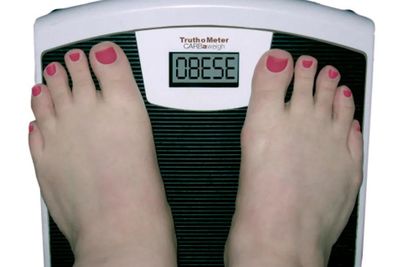Did you happen to catch the recent four-part HBO documentary series, "The Weight of the Nation"? I watched most of it and plan to catch up on the rest. It's hard to resist that story, even though I was already fully aware of America's obesity crisis; all you have to do is look around.
It's all at once astounding, frightening and heartbreaking to see the growing girth of not just adults but of children, as well. To hear experts from leading research institutions along with struggling individuals and families talk about it made it that much, er, bigger and more urgent.
Here's one scary statistic: In 2010, over 64 percent of people were overweight or obese, and the number continues to climb. Steering clear from becoming a statistic might seem rather obvious, yet if it is that obvious, why do people continue to struggle with their weight? Perhaps it's too overwhelming to deal with, as life can be so complicated while people are pulled in so many directions. Maybe weight comes dead last behind the everyday and overwhelming tasks of working, caring for a family, juggling finances and finding time to exercise. Oh, I'll think about that tomorrow, people think. I'm not really that overweight … I'm doomed because of my genetics … after menopause there's nothing I can do … I just don't care all that much; vanity is not my thing.
What defines obesity? A common and somewhat reliable measure for adults is your BMI (body mass index). You're considered overweight if it's between 25 and 29.9 and obese if it is higher than 30. (Curious how to calculate yours? I'll supply the handy link from the CDC at the end of this post.)
But weight goes way beyond vanity. You should care: there are too many implications and reasons not to. Here are some startling facts from the series.
For adults:
- One study showed that obese people, compared with normal-weight folks, are 83 percent more likely to develop kidney disease.
- Obesity costs the workforce an estimated $73.1 billion per year.
- In the 25 years between 1987 and 2010, the number of Americans diagnosed with diabetes almost tripled to 20.9 million.
- Americans should get at least 150 minutes of moderate-to-intense activity every week, according to the Physical Activity Guidelines.
- One in four adults gets no leisure-time moderate or vigorous activity.
- Foods obtained outside the home tend to be higher in calories and fat than food prepared at home.
- Being overweight puts you at increased risk of dangerous diseases and conditions like type 2 diabetes, high blood pressure, high cholesterol, coronary heart disease, stroke, gallbladder disease, osteoarthritis and certain cancers.
For children:
- Approximately 12.5 million children and adolescents aged 2-19 (17%) are obese.
- The percentage of children between 6 and 11 in the United States who were obese increased from 7 percent in 1980 to nearly 20 percent in 2008.
- Ninety percent of parents with obese children do not seek medical help.
- Half of all obese teenage girls will become extremely obese by their early 30s.
- Children and adolescents consume not only too much sugar-sweetened beverages (the largest source of sugar in their diets), but too much media, too (more than 7.5 hours a day, 7 days a week).
- Preschool children, according to Nielsen data, were exposed to 50 percent more TV ads for energy drinks in 2010 compared to 2008.
- The Physical Activity Guidelines for American children recommend a daily dose of 60 minutes of physical activity.
- In schools, daily physical education is sparse: only 4 percent of elementary schools, 8 percent of middle schools and 2 percent of high schools provide it.
- On average, kids who spend more time playing outdoors are more physically active and less likely to be overweight; they also have better blood pressure and cholesterol than those who don't.
Fact: To burn off an average serving of French fries, a 150-pound adult needs to run for 1.5 hours at a speed of 5 mph or walk for 3.13 hours at 2 mph.
Here's how to calculate your BMI


